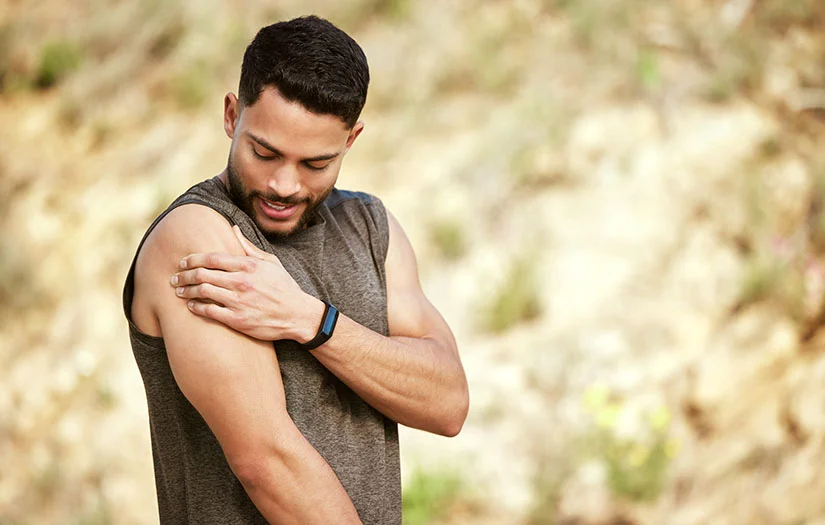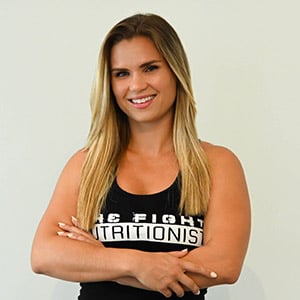BY
JACQUELINE KAMINSKI
If you’ve ever done any type of strenuous exercise, I’m sure you have felt the effects of it the next day. Can’t move. Stiff. Aching… what most of us allude to as muscle soreness.
Anyone who’s never experienced muscle soreness is most definitely lying because regardless of your fitness level, muscle soreness is inevitable. As a result, muscle recovery is always a relevant subject to examine.
WHAT CAUSES MUSCLE SORENESS (DOMS)?
Muscle soreness can be caused by various factors such as strenuous exercise, inflammation, low energy availability (mainly reduction in muscle glycogen and lactic acid build-up), and/or even injury.
WHEN DO YOU USUALLY EXPERIENCE SORE MUSCLES?
Muscle soreness is commonly experienced immediately during or in the hours following exercise. When soreness doesn’t occur until 24 hours following exercise and persists for up to 3-7 days it is typically referred to as delayed onset muscle soreness or “DOMS”.
IS THERE A DIFFERENCE BETWEEN DOMS AND TYPICAL MUSCLE SORENESS?
No! They are used interchangeably. Delayed Onset Muscle Soreness (DOMS) is typically caused by micro-tears in your muscles, which is common during exercise – especially eccentric exercises.
Eccentric muscle contractions cause greater disruptions to the structural elements of the muscle compared to concentric forms of activity. These “disruptions” ultimately cause minor tissue injuries and will lead to inflammation. However, these minor injuries aren’t bad! The inflammation that follows exercise is needed to help build and repair stronger tissues!
As aforementioned, DOMS typically occurs following hard, strenuous exercise and is typically most common when an exercise program is being started for the first time or when exercise begins again after long periods of rest. DOMS is a normal occurrence and typically indicates that positive muscle adaptations are occurring.
The soreness lessens with each subsequent day after exercise, however, when the pain from soreness is very severe or persists longer than a few days, it can indicate some serious damage has occurred and potentially increase the risk for injury.
6 WAYS TO TREAT DOMS?
Muscle soreness makes exercising the next day very difficult, so what are some preventative measures one can take to be able to stay active? Try these 6 ways to prevent or reduce DOMS
- Consume Enough Protein, Carbs, Fluids, and Electrolytes Before & After Training
- Get Massages
- Wear Compression Garments
- Utilize Active Recovery
- Use NSAIDs When Appropriate
- Foam Roll Your DOMS Away!
1) CONSUME ENOUGH MACRONUTRIENTS & ELECTROLYTES
Exercise induces muscle damage. Following that damage comes inflammation, in which blood flow is directed to that area to provide nutrients to heal damaged tissues. To provide the body with adequate energy and nutrients to repair tissues, we need to consume protein and carbohydrates.
Many studies have shown that consumption of a complete protein (20-30 grams) plus carbohydrates after exercise facilitates recovery much more quickly than a carbohydrate or protein feeding alone.
Additionally, feedings post-workout help reduce inflammation. Fluids and electrolytes are also needed to facilitate muscle recovery. Muscle contractions require various electrolytes that are lost in sweat, therefore proper fluid and electrolyte recovery is also essential in preventing soreness. Lastly, consumption of foods high in antioxidants can reduce inflammation.
2) CONSIDER GETTING A MASSAGE
One meta-analysis reported that a 20–30-minute massage immediately and within 2 hours after excise effetely reduced DOMS for up to 96 hours.
Since DOMS can be induced by muscle damage, massages help increase blood flow to damaged areas. In studies looking at blood markers of inflammation, massages were shown to decrease levels of Creatine Kinase and Interleukin-6.
3) WEAR COMPRESSION GARMENTS & TRY COLD-WATER IMMERSION
Similarly to massage, compression garments help with blood flow and can reduce swelling that accompanies hard exercise. While compression garments aren’t as effective as massage in reducing DOMS, several studies have shown it still has a positive impact on recovery.
4) TRY ACTIVE RECOVERY WORKOUTS!
While it makes sense to keep moving to prevent stiffness and stimulate blood flow, some studies show no differences exist between passive and active recovery methods in improving DOMS. One study evaluating active recovery (cycle at 60% of peak and low-intensity resistance training) in female soccer players 22 and 46 hours after a tournament showed no differences in recovery compared to passive methods.
However, for active individuals or athletes, it is not always possible to stop exercising and take long rest periods. Therefore, it’s recommended to reduce the intensity and duration of exercise temporarily (1-2 days) or do exercises that target less affected body parts.
Some studies have shown that doing a small number of isometric contractions or low intensity, lengthening concentric exercises before exercise, and continuing for at least 2 weeks before introducing intense exercise can reduce the effect of DOMS.
5) NON-STEROIDAL ANTI-INFLAMMATORY DRUGS (NSAIDS)
NSAIDs are used by people of all ranges of age and fitness levels to reduce soreness or inflammation that can accompany hard exercise. However, initial caution needs to be given when taking NSAIDS within the first few hours after exercise. As mentioned previously in this article, initial inflammation following exercise is necessary for healing and adaptation.
The use of NSAIDS can inhibit this process. Additionally, reports of NSAIDS being effective in reducing DOMS is extremely varied in literature and more research is needed on appropriate dosing and timing. Lastly, long-term effects of heavy NSAID use can lead to kidney and GI complications.
6) USE FOAM ROLLING TO YOUR ADVANTAGE
After intense exercise, foam rolling has been shown to alleviate soreness and even improve muscular performance. To achieve optimal recovery, it is recommended to foam roll between 90-120 seconds on each sore muscle site to improve range of motion and reduce muscle stiffness.
IS GETTING DOMS BAD? WHAT IF YOU GET IT MORE THAN ONCE?
As mentioned previously, DOMS is likely to occur after hard, strenuous exercise. While the likelihood of DOMS occurring when you’re an extremely active individual is less likely compared to if you were starting a fitness program after a long period of inactivity — it is still possible. Soreness following exercise is not bad. I repeat. It simply indicates that your body was pushed beyond its limits, and now adaption must occur to get stronger.
Does lactic acid have anything to do with it? Lactic acid build-up occurs immediately following intense exercise and is metabolized quickly. Therefore, lactic acid is not responsible for DOMS.
Can you still work out with sore muscles? Absolutely! While DOMS might make exercise more difficult and can decrease strength and power the following day, one can still perform less intense activities for a few days or focus on muscle groups that aren’t as sore. As mentioned earlier in this article, both active and passive recovery methods can help alleviate perceived soreness. Additionally, dynamic stretches and exercises to improve blood flow and range of motion can also be useful in continued exercise after having DOMS.
CONCLUSION ON DELAYED ONSET MUSCLE SORENESS & ITS PREVENTION
Overall, when it comes to exercise — soreness is inevitable. When that soreness creeps in 24 hours after exercise and persists for a few days, it is referred to as delayed onset muscle soreness. While the mechanisms behind DOMS are multifaceted and still being studied, we can conclude a few things to help prevent it.
1. Progressively transition into a fitness program. Especially after long periods of inactivity.
2. Consume a rich source of protein (20-30g) and carbohydrates following exercise to promote tissue healing and recovery. Foods high in antioxidants can also combat inflammation and promote recovery. Fun fact! Antioxidant-rich foods don’t hinder the recovery process of post-exercise inflammation and adaptation.
3. Focusing on recovery techniques such as massage, compression, and foam rolling are helpful in reducing soreness and pain associated with DOMS.


